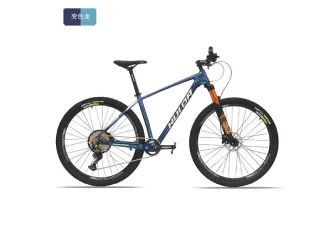8 月 . 05, 2024 13:21 Back to list
Step-by-step guide for installing a rear derailleur on your mountain bike easily and effectively
How to Install a Rear Derailleur on a Mountain Bike
Installing a rear derailleur on a mountain bike can seem daunting at first, especially if you're not familiar with bike mechanics. However, with the right tools and some basic knowledge, you can easily complete this task, improving your bike's performance and shifting capabilities. Whether you're replacing an old derailleur or installing a new one, this guide will walk you through the process step by step.
Tools Needed
Before you begin, make sure you have the following tools on hand
- A 5mm Allen wrench (or the appropriate size for your derailleur) - A screwdriver (if needed for the cable anchor) - Cable cutters - A chain tool (if you're adjusting the chain length) - A torque wrench (optional but recommended for precision)
Step 1 Remove the Old Derailleur
If you're replacing an old rear derailleur, start by detaching it from the bike. Locate the mounting bolt on the derailleur that connects it to the derailleur hanger. Use the 5mm Allen wrench to unscrew and remove the bolt. Once the bolt is removed, gently pull the derailleur off the hanger. Be sure to also unhook the derailleur cable from its anchor point, as well as remove the chain from the derailleur if necessary.
Step 2 Clean the Area
Before installing the new derailleur, take a moment to clean the derailleur hanger and surrounding areas
. Dirt and grime can affect the performance of the derailleur, so ensuring that the mounting surface is clean will help achieve smooth shifting.Step 3 Install the New Rear Derailleur
how to install rear derailleur mountain bike

Position your new rear derailleur onto the derailleur hanger. Align it properly, making sure the jockey wheels (the small wheels on the derailleur) sit below the chain. Once aligned, insert the mounting bolt into the derailleur and tighten it with the Allen wrench. If you have a torque wrench, refer to the manufacturer's specifications for proper torque settings to avoid over-tightening or damaging the derailleur.
Step 4 Reattach the Chain
If you removed the chain during the replacement, now is the time to reattach it. Make sure the chain is threaded correctly through the derailleur's jockey wheels. Follow the designated path indicated on the derailleur. After correctly positioning the chain, ensure that it is secure and properly tensioned.
Step 5 Connect the Derailleur Cable
Next, you’ll need to reconnect the derailleur cable. Feed the cable through the barrel adjuster, then anchor it to the derailleur’s cable anchor bolt. Use a screwdriver to tighten the bolt securely. Pull the cable to remove any slack before tightening it to ensure accurate gear shifts.
Step 6 Adjust the Derailleur
With the derailleur installed and the cable connected, it’s time to adjust the derailleur for optimal performance. Shift the bike into the highest gear (smallest rear cog) and check the alignment. Adjust the limit screws to ensure the derailleur doesn’t shift beyond the smallest and largest cogs, preventing any potential derailments.
Next, fine-tune the cable tension using the barrel adjuster. You should be able to shift smoothly across all gears. If the shifting feels sluggish or skips gears, adjust the tension until it feels right.
Conclusion
Installing a rear derailleur on your mountain bike can greatly enhance your riding experience and ensure smooth gear transitions. By following these steps, you can complete the installation yourself and save on mechanic fees. Regular maintenance and timely adjustments can help keep your bike in peak condition, allowing you to enjoy your mountain biking adventures to the fullest. Happy riding!
-
The Main Application Scenarios of Mountain Bike
NewsOct.29,2024
-
Suggestions for Selecting and Maintaining Mountain Bike
NewsOct.29,2024
-
Characteristics of Kids Balance Bike
NewsOct.29,2024
-
Characteristics of Baby Stroller
NewsOct.29,2024
-
Characteristics and Advantages of Mountain Bike
NewsOct.29,2024
-
Baby Stroller Purchasing Suggestions
NewsOct.29,2024
-
Suggestions for Purchasing Kids Balance Bike
NewsOct.09,2024

